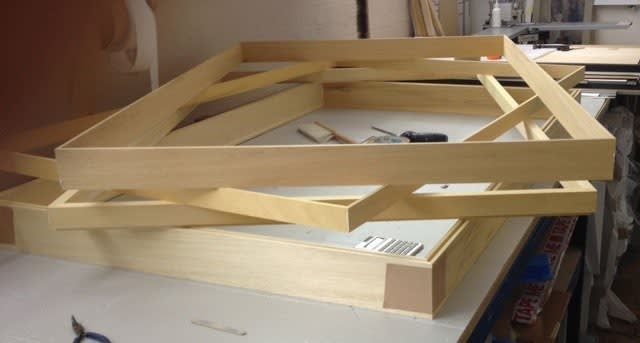
Recently we asked Zinc White framers based in Putney Bridge Road, who we have used for a number of years, to write a guest blog. This is what they had to say:-
Every day we discuss framing issues with our customers, here are the five questions we are asked most frequently.
1. Is it OK to put my artwork right behind the glass?
2. Will sunlight damage my artwork?
3. Can you make my print flat?
4. Do I need a mount?
5. Which is better, glass or acrylic?
And our responses are usually along these lines…
1. We recommend a space between the artwork and the glass. If an artwork hangs in a cool room overnight and suddenly warms in sunlight, following a blind or curtain being opened, condensation is likely to occur on the rear of the glass, transferring moisture to the artwork. Over time moisture will damage the artwork. If there's a small gap, created by a ‘spacer' around the inside of the frame, or a window mount, any condensation will slowly evaporate without damaging the artwork.
2. Ultra violet light from the sun will damage some artworks over time. The canvas or linen on which oils and acrylics are painted are more prone to damage from UV than the actual paint. Most inks used in printmaking are relatively lightfast as are watercolour paints, but the papers on which they are painted can contain lignin. The cellulose in lignin oxidises in UV light and goes light brown over a long period of time. Artworks can be glazed in UV protective glass which reduces these damaging effects.
3. There are two principle ways to frame a print, firstly under a window mount which holds it relatively flat around its edge, and secondly ‘floating’, whereby it lays on top of the mount card, with the edges of the artwork visible. This is called ‘floating’. A few ‘hinges’ or sticky tabs, made of acid free paper are used to hold the print in place. As the paper expands and contracts slightly in differing temperatures and levels of humidity it tends to curve very slightly around the edges. This is the best way to attach a print, as it’s reversible, so the artwork can be framed in another way in the future. It doesn’t damage the artwork. To make a print absolutely flat it has to be stuck down which is irreversible and may reduce the value of the artwork.
4. As mentioned above, the mount performs two key functions, it prevents the artwork touching the glass and holds it down flat, allowing the artwork to expand and contract under the mount. The alternative to a mount is ‘floating’ as described above, or keeping the artwork in place using a narrow piece of wood, or ‘spacer’ around its edge and under the inside rim or ‘rebate’ of the frame.
5. There are pros and cons of each. Visually, there's little difference, they look identical. Acrylic is lighter and less breakable than glass, good for children’s rooms and for artworks being shipped abroad. However, it’s more expensive. It normally scratches when cleaned, unless it is a scratch resistant type. It can have Anti reflective and UV protecting qualities, but this makes it very expensive. Glass is the best all round option unless there's a specific reason to use acrylic.
We would like to extend a big thank you to all of the staff at Zinc White for their informative blog. Contact the teams via ian@zinc-white.co.uk or on 07967 481429 to discuss all of your framing needs and make an appointment.